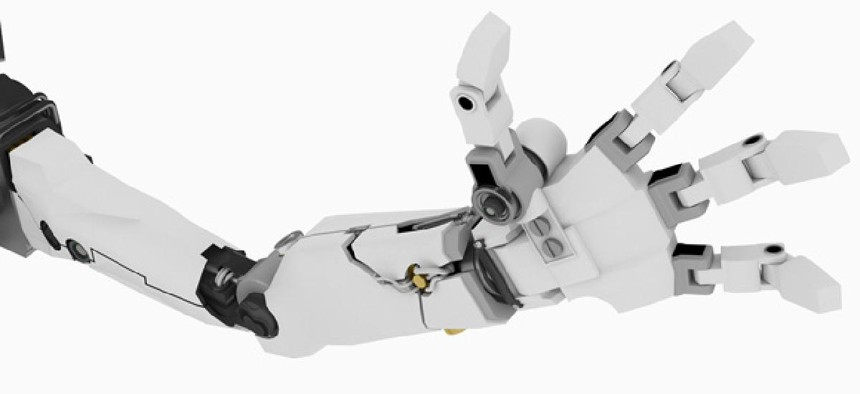Patient S3: The woman who controlled a robotic arm with her brain

higyou / Shutterstock.com
15 years after she lost the ability to move her body, Cathy Hutchinson is learning how to use her brain to control a robotic arm.
Today scientists announced in the journal Nature the results of a landmark experiment in which paralyzed subjects were able to control a robotic arm using only their thoughts. The research, after decades of exploration, holds out promise for the future of restoring damaged bodies using robotic prostheses.
Led by researchers at Brown University, the Department of Veterans Affairs, and Massachusetts General Hospital, the study--known as BrainGate--utilized a device called the BrainGate Neural Interface System, implanted directly into the motor cortex of the participants. Wired to a bank of computers, the system was then able to decode their brain's neural signals for movement and translate them into robotic movement. "This work is a critical step," John Donoghue, the neuroscientist who developed BrainGate, said in a statement announcing the research, "toward realizing the long-term goal of creating a neurotechnology that will restore movement, control, and independence to people with paralysis or limb loss."
The two subjects--a 58-year-old woman identified as subject S3 and a 65-year-old man designated as T2, both with tetraplegia--were first able to control a cursor on a screen by thinking about its movement. They then graduated to an advanced humanoid robotic arm made by the German space agency DLR and an advanced prosthetic made by New Hampshire-based DEKA Research. When the subjects concentrated on moving the robotic appendages, their brain supplied the signals for their intent, BrainGate captured those signals, and the robotic limbs responded in turn.
Read the full story at The Atlantic.
(Image via higyou/Shutterstock.com)


